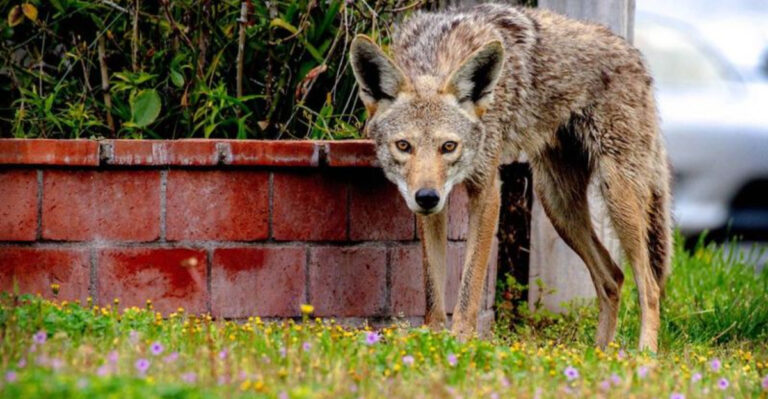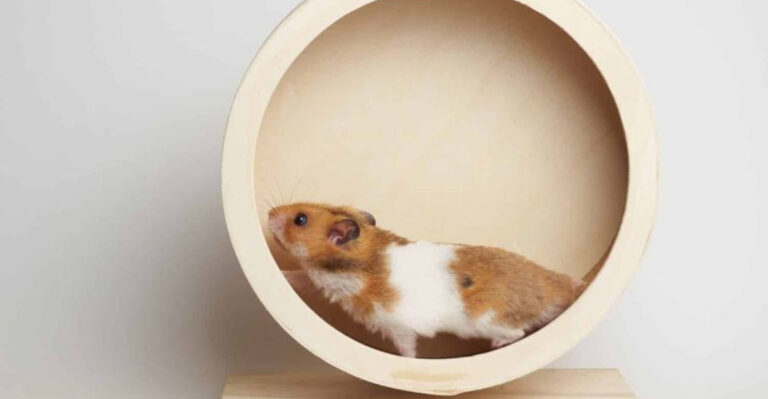18 Effective Ways To Squirrel-Proof Your Bird Feeders
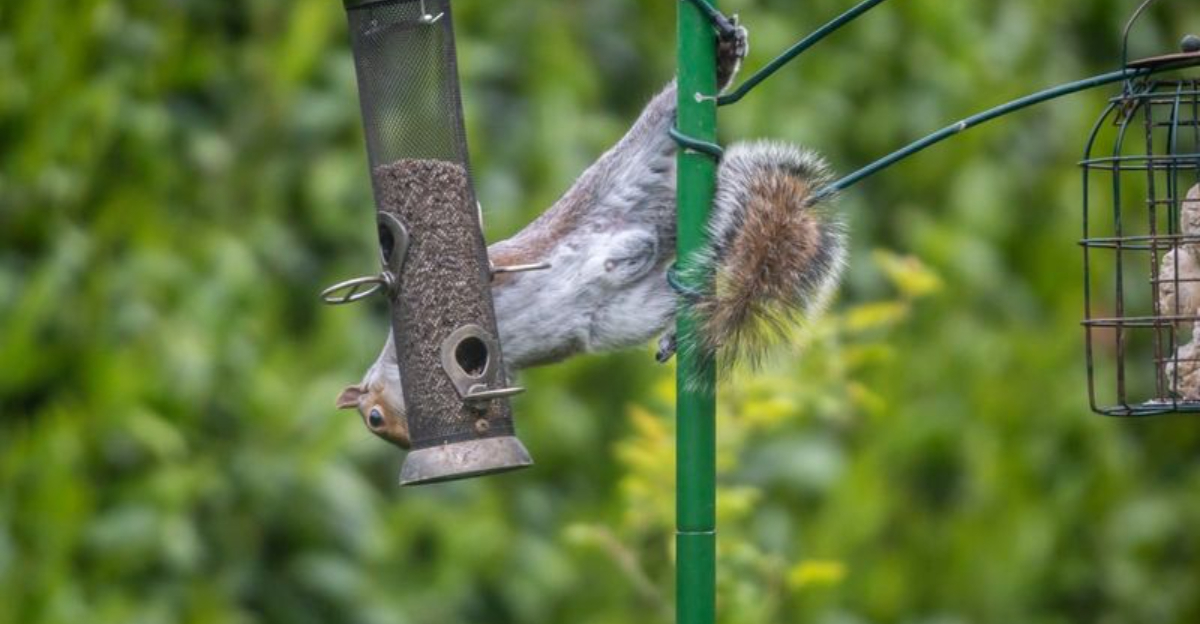
Bird watching brings joy to millions, but those pesky squirrels can quickly turn your peaceful hobby into a frustrating battle. These acrobatic critters seem to solve even the most complex feeder puzzles, leaving little for your feathered friends to enjoy.
Fortunately, you don’t have to surrender your bird seed to these furry thieves – with the right strategies, you can keep squirrels at bay while still attracting beautiful birds to your yard.
1. Use Squirrel-Proof Bird Feeder Designs
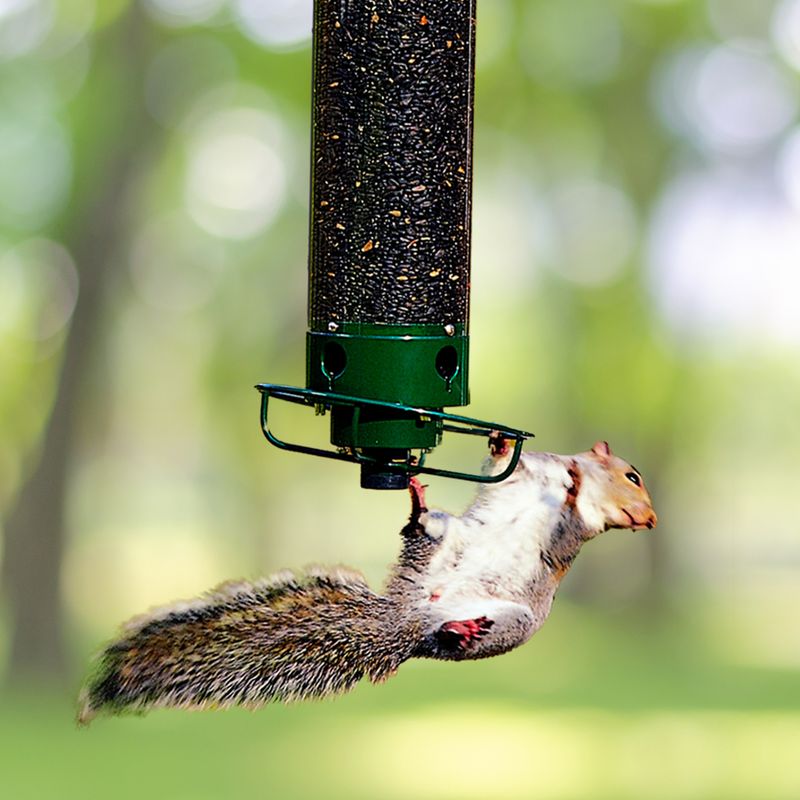
Weight-sensitive feeders are game-changers in the battle against squirrels. When these clever mammals hop on, their weight triggers a mechanism that closes access to the seed.
Meanwhile, birds can feed without disruption. Look for tube feeders with metal ports that squirrels can’t chew through for extra protection.
2. Install A Baffle
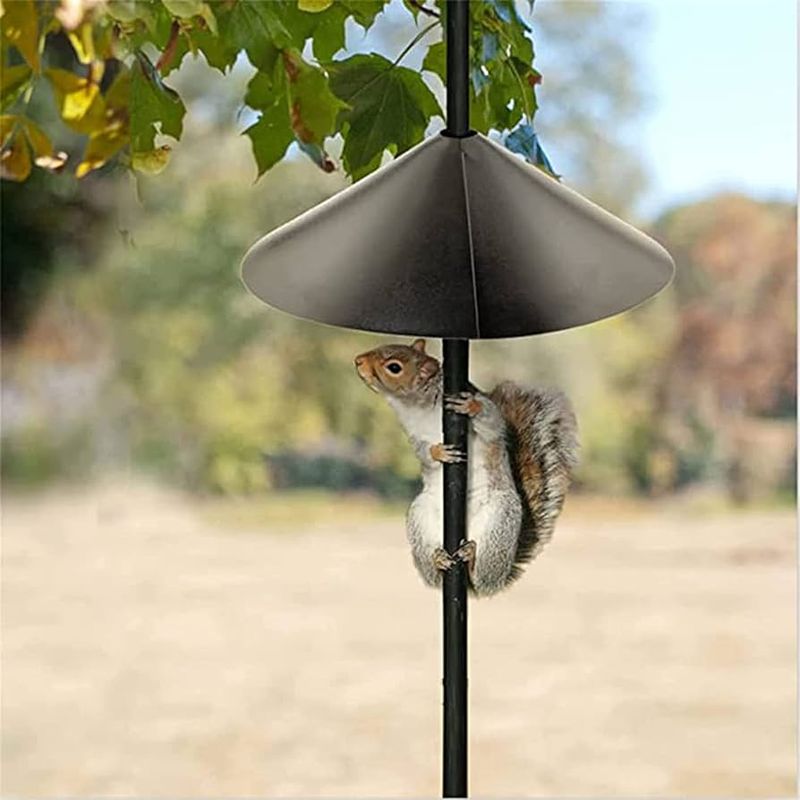
Baffles are simple yet brilliant solutions for pole-mounted feeders. These dome or cylinder-shaped shields prevent climbing squirrels from reaching your bird seed.
Position them correctly – at least 4 feet from the ground and away from jumping points. Made of slippery material, squirrels slide right off when they try to bypass this clever barrier.
3. Use Safflower Seed
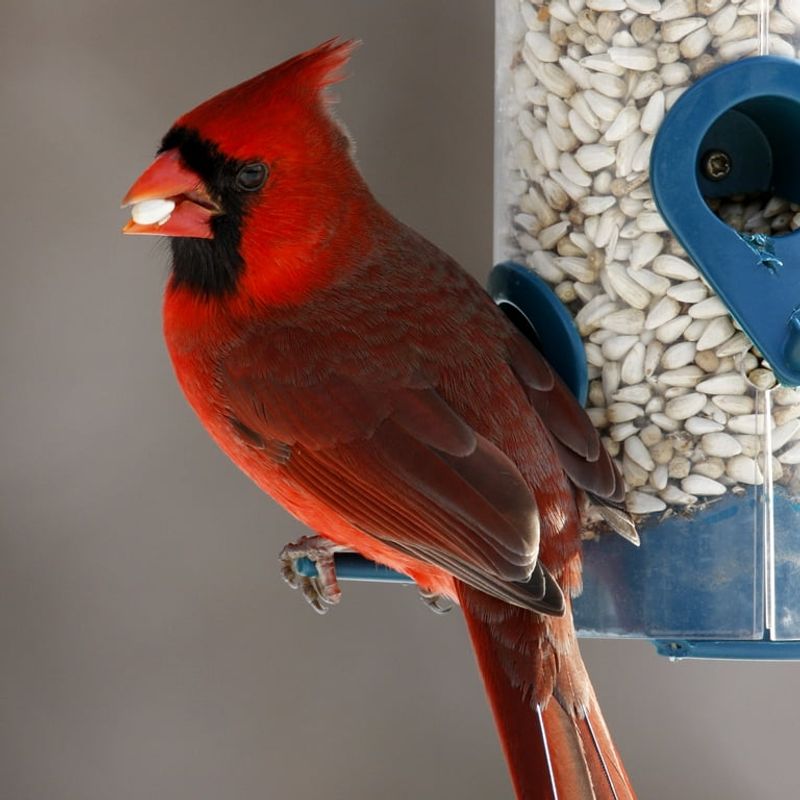
Cardinals and finches love safflower seeds, but squirrels turn up their noses at the bitter taste. This white, triangular seed creates a natural deterrent without any extra gadgets.
Fill your feeders with this squirrel-repelling alternative to sunflower seeds. As a bonus, pesky starlings and grackles also tend to avoid safflower, making it a win-win solution.
4. Place Feeders On A Pole With No Nearby Perches
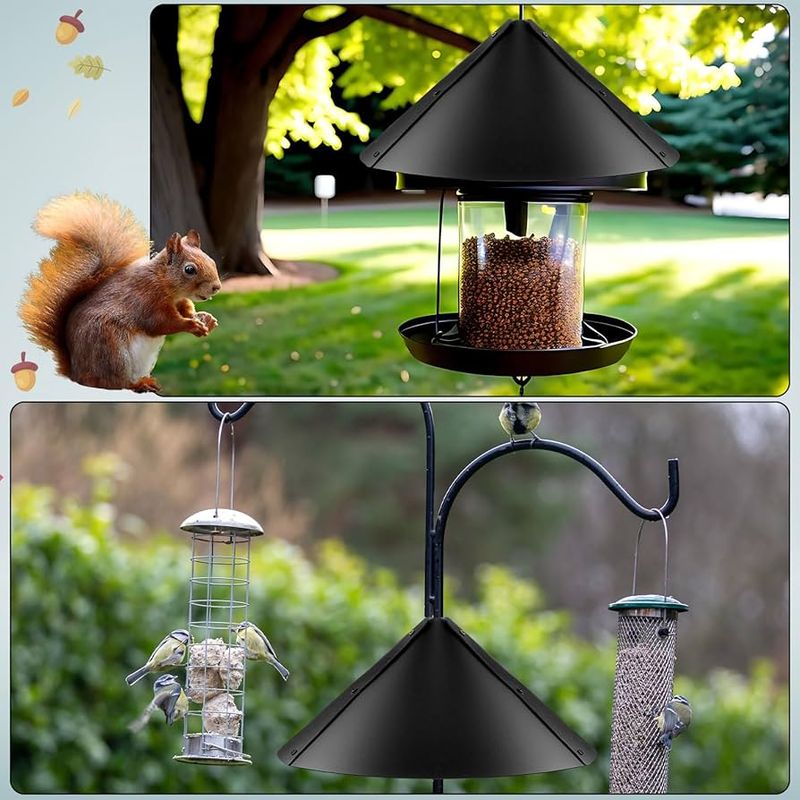
Squirrels are impressive jumpers, clearing distances up to 10 feet horizontally! Strategic placement is your secret weapon.
Install feeders on a smooth metal pole at least 10-12 feet from trees, fences, or buildings. Without launching pads nearby, even Olympic-level squirrel athletes can’t make the leap to your carefully positioned feeders.
5. Add Chili Powder Or Hot Sauce To Seeds
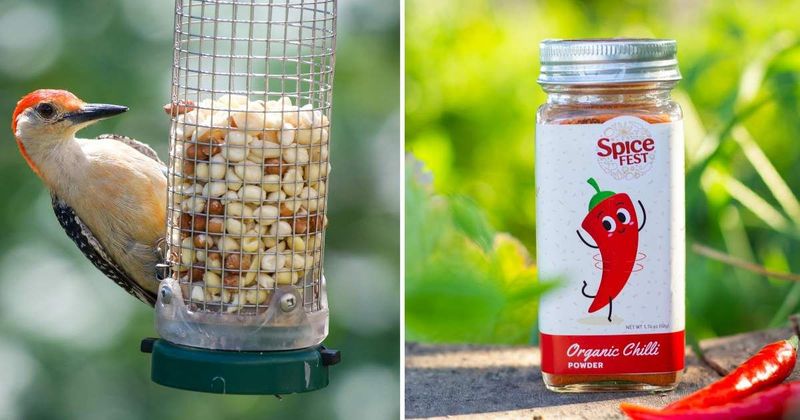
Birds lack receptors for capsaicin – the compound that makes peppers hot – but mammals feel the burn! Mixing cayenne pepper or hot sauce with your bird seed creates a spicy surprise for squirrels.
They’ll quickly learn to avoid your fiery feeders. Just one taste sends them scurrying away while birds continue dining, completely unaffected by the heat.
6. Use A Squirrel Feeder
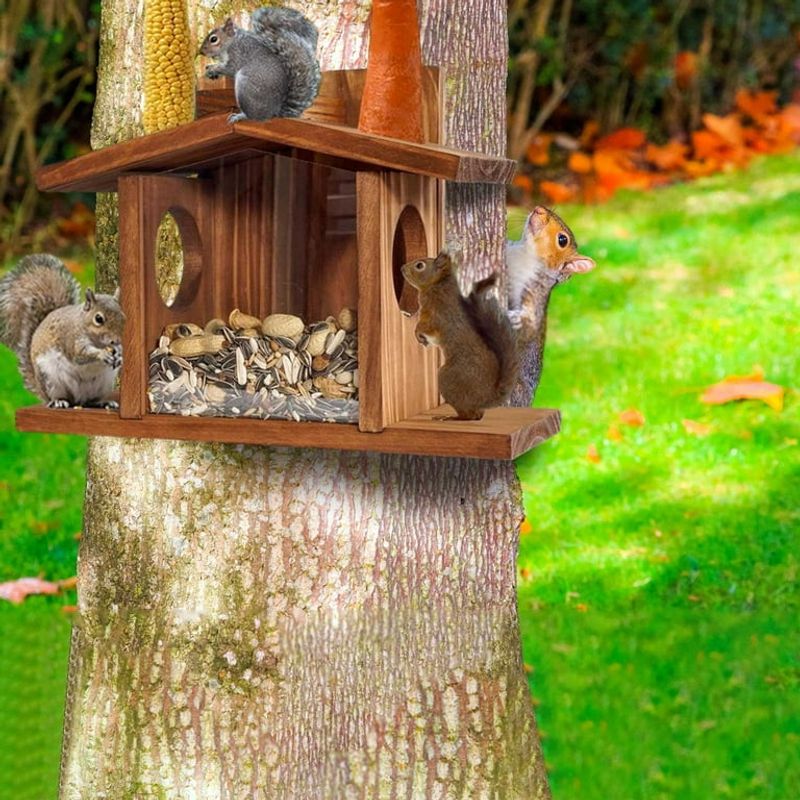
Sometimes the best strategy isn’t fighting squirrels but redirecting them! Set up a dedicated squirrel feeding station away from your bird feeders with their favorite treats like corn and peanuts.
With their own buffet, they’re less motivated to raid bird feeders. This peaceful coexistence approach lets you enjoy watching both birds and squirrels without conflict.
7. Try A Squirrel-Proof Bird Feeder Pole
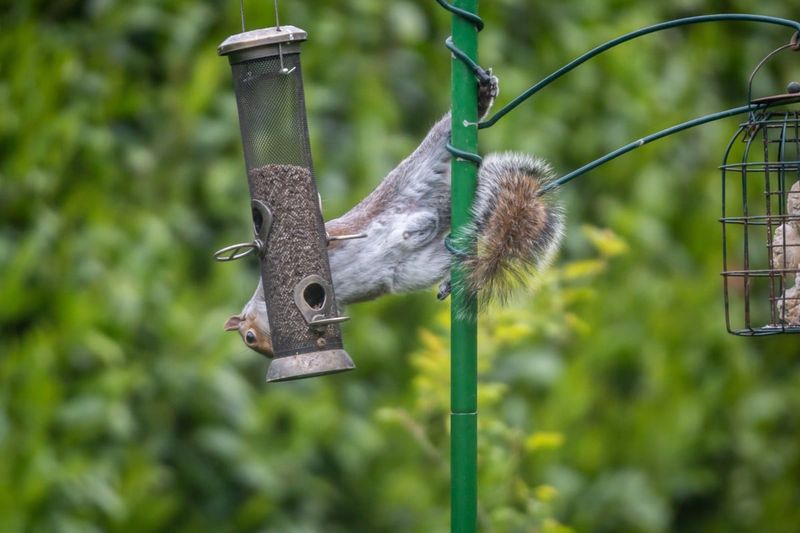
Specialized poles take squirrel-proofing to the next level with built-in defenses. Some feature smooth, slippery surfaces that tiny claws can’t grip. Others incorporate spinning or wobbling sections that send squirrels tumbling.
These engineering marvels create an impossible climbing challenge even for the most determined raiders. Look for poles with adjustable height options for maximum effectiveness.
8. Feed At Specific Times
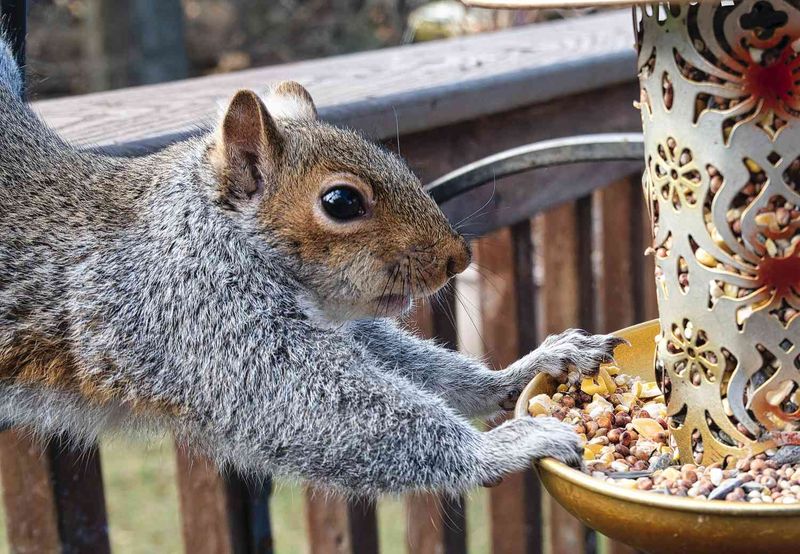
Squirrels follow predictable activity patterns, typically foraging in early morning and late afternoon. Outsmart them by putting out feeders mid-day when birds are active but squirrels often rest.
Remove or cover feeders during prime squirrel hours. This timing strategy reduces seed loss and trains birds to visit during your scheduled feeding windows.
9. Keep Bird Feeders Clean
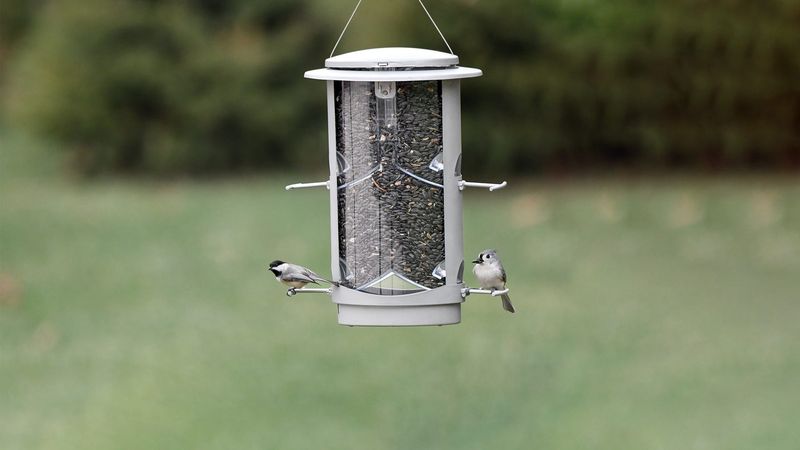
Seed shells and debris under feeders act like neon signs advertising free food to squirrels. Regular cleaning eliminates these tempting clues.
Empty and scrub feeders weekly to remove sticky residue that attracts pests. This maintenance not only deters squirrels but also prevents disease spread among your feathered visitors, keeping your bird sanctuary healthy.
10. Choose Larger, Heavy Feeders
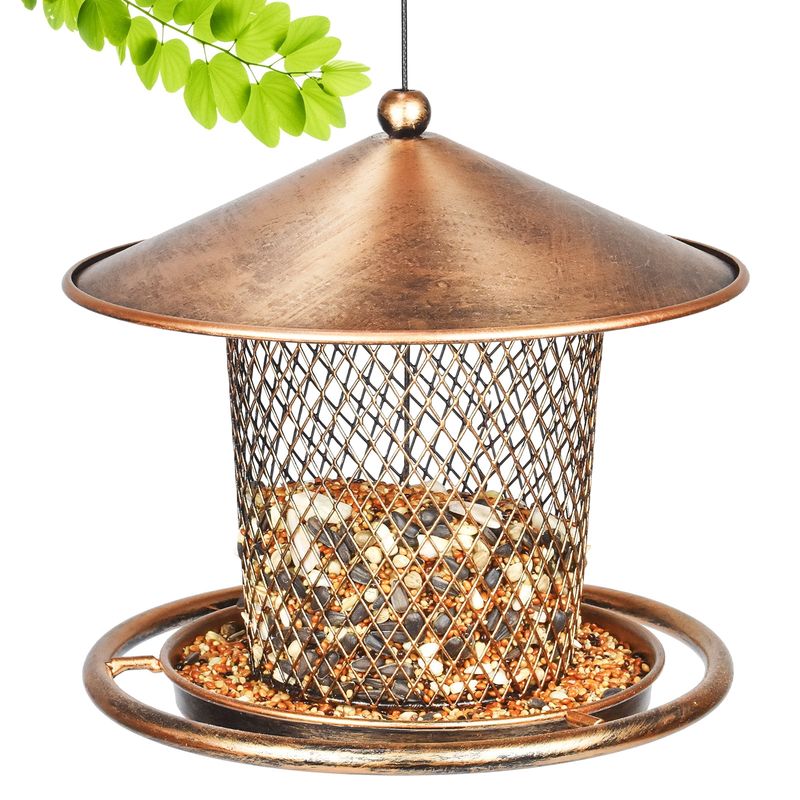
Lightweight feeders become squirrel playthings – easily knocked down or manipulated. Substantial, heavy-duty models resist these antics and stay firmly in place.
Metal components withstand sharp teeth that quickly destroy plastic parts. The investment in a quality, heavyweight feeder pays off through durability and improved squirrel resistance, saving money on replacements.
11. Place Feeders On An Elevated Location
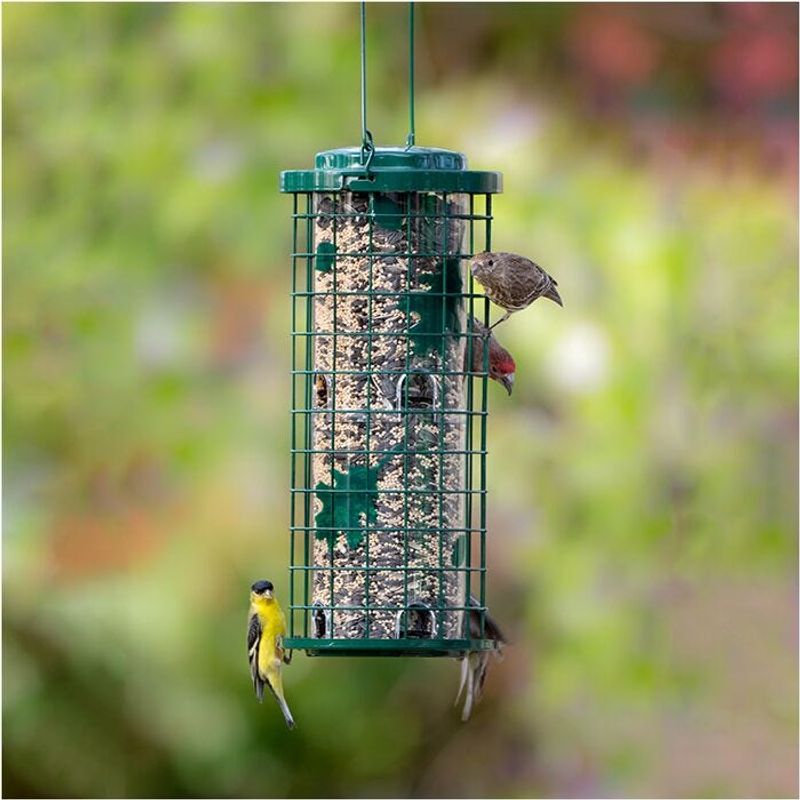
Height creates a natural barrier against ground-dwelling squirrels. Hang feeders from thin wire at least 10 feet high and 8 feet from any jumping point.
The precarious wire pathway proves too unstable for squirrels to navigate. For extra protection, use smooth, thin fishing line that’s nearly impossible for squirrels to grip while birds can easily fly directly to the feeder.
12. Use Squirrel-Proof Bird Feeder Covers
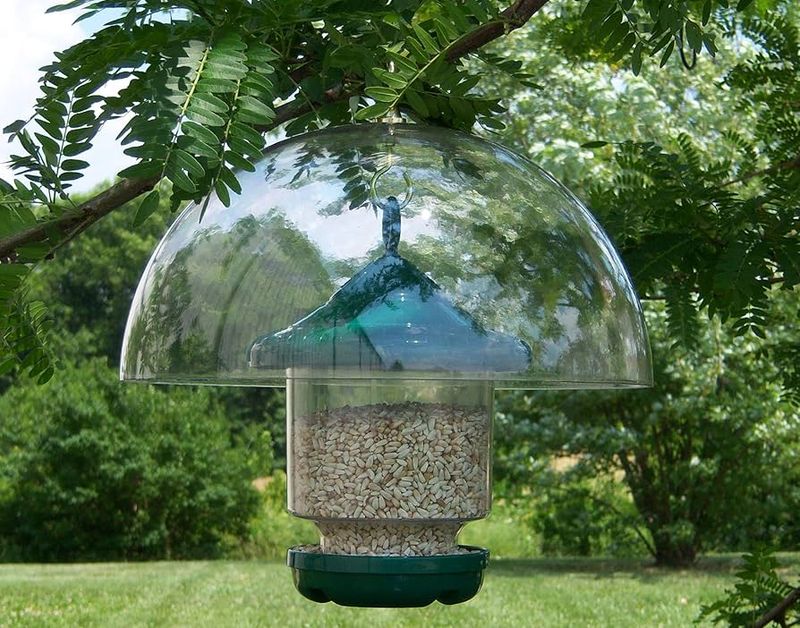
Transparent domes create both physical barriers and weather protection. Positioned correctly above feeders, these slippery covers prevent squirrels from climbing down to reach seed.
The angle and material make maintaining a grip impossible. Birds simply fly under the dome to access food while squirrels slide off in frustration, making these simple additions surprisingly effective deterrents.
13. Install An Anti-Squirrel Cage Around The Feeder
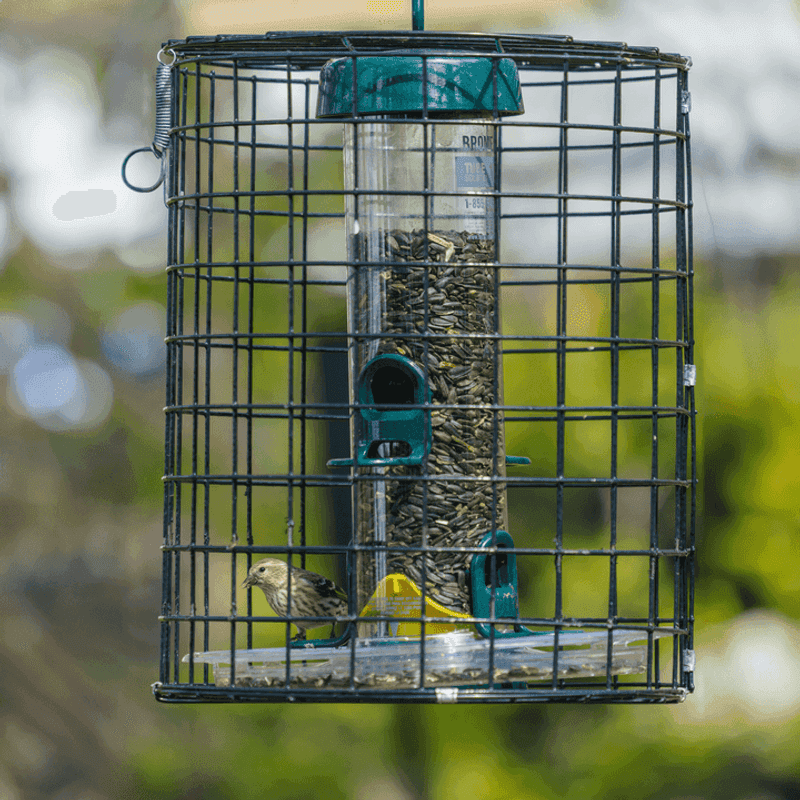
Caged feeders create a physical barrier with openings sized perfectly for birds but too small for squirrels. Small songbirds easily slip through the wire mesh while squirrels remain locked out.
The cage design maintains visibility so you can still enjoy watching your feathered visitors. Choose models with appropriate spacing – about 1.5 inches works for most songbirds.
14. Use A Squirrel-Repellent Spray
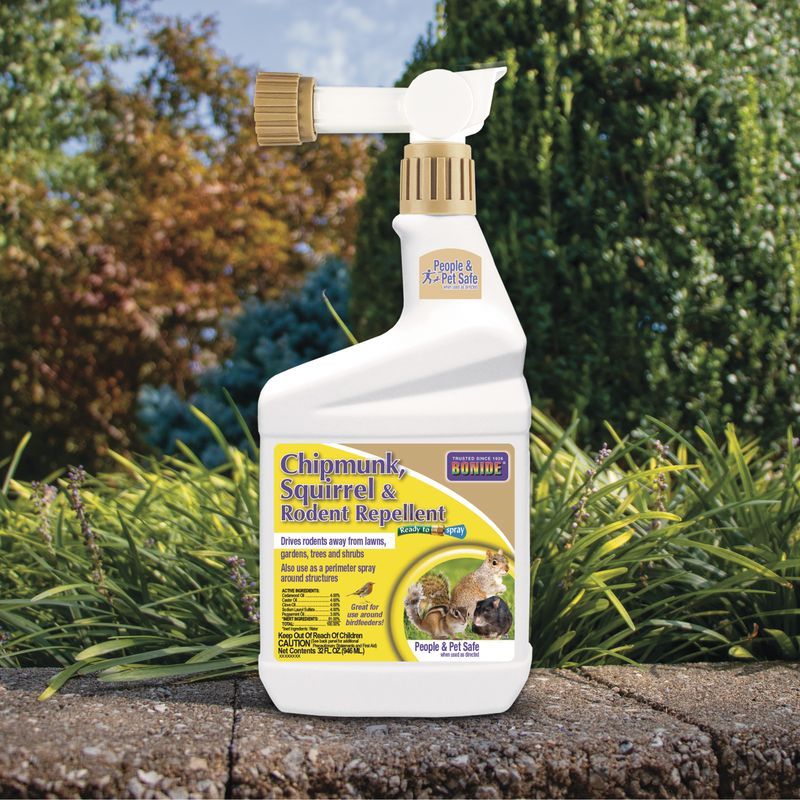
Natural repellents harness scents squirrels naturally avoid without harming birds or plants. Peppermint, garlic, and vinegar solutions create invisible boundaries squirrels won’t cross.
Apply to poles and hanging wires, not directly on seed. These non-toxic formulas need regular reapplication, especially after rain, but provide an eco-friendly way to discourage persistent raiders.
15. Try A Squirrel-Proof Bird Feeder With A Spring-Loaded Door
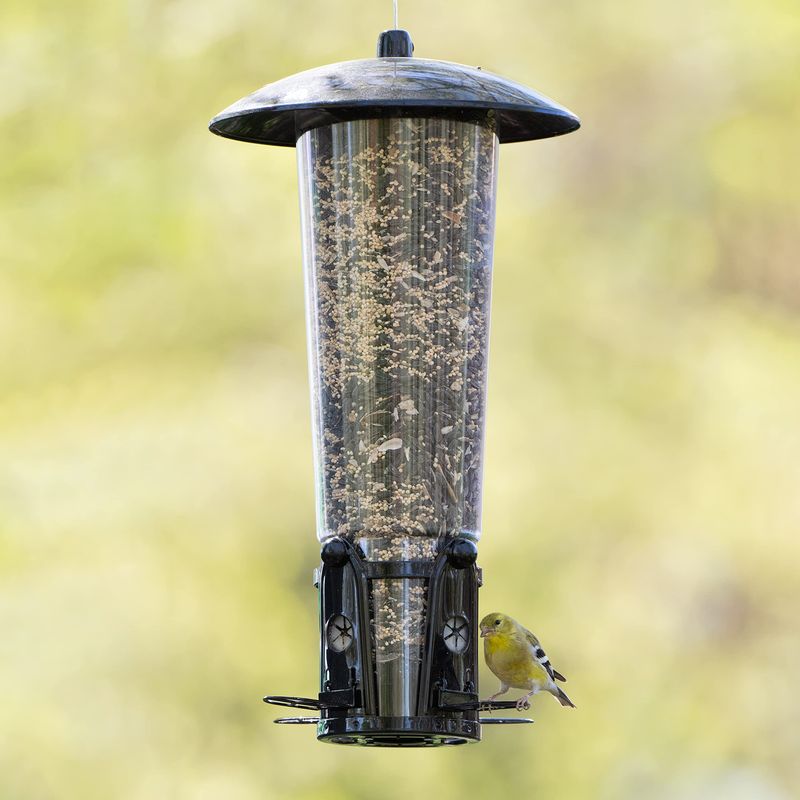
Engineering meets wildlife management in these clever devices. Spring-loaded doors snap shut when triggered by a squirrel’s weight on the feeding perch.
Lightweight birds feed normally while heavier squirrels activate the closing mechanism. The startled squirrel gets a harmless lesson in physics as the door closes, protecting your seed investment and providing some amusing backyard entertainment.
16. Keep The Ground Clean
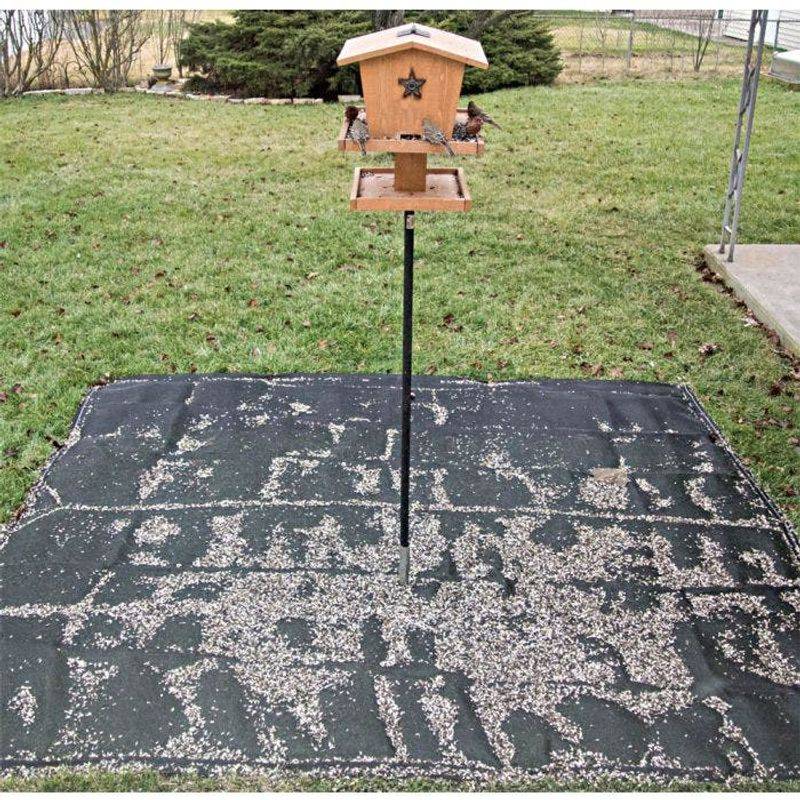
Messy birds scatter seed below feeders, creating a squirrel buffet that attracts and rewards unwanted visitors. Install seed catchers beneath feeders to collect fallen treasures.
Regularly rake or vacuum the area to eliminate ground feeding opportunities. This simple maintenance routine breaks the reward cycle that trains squirrels to view your yard as an easy food source.
17. Use A Squirrel-Proof Bird Feeder With A Weighted Bottom
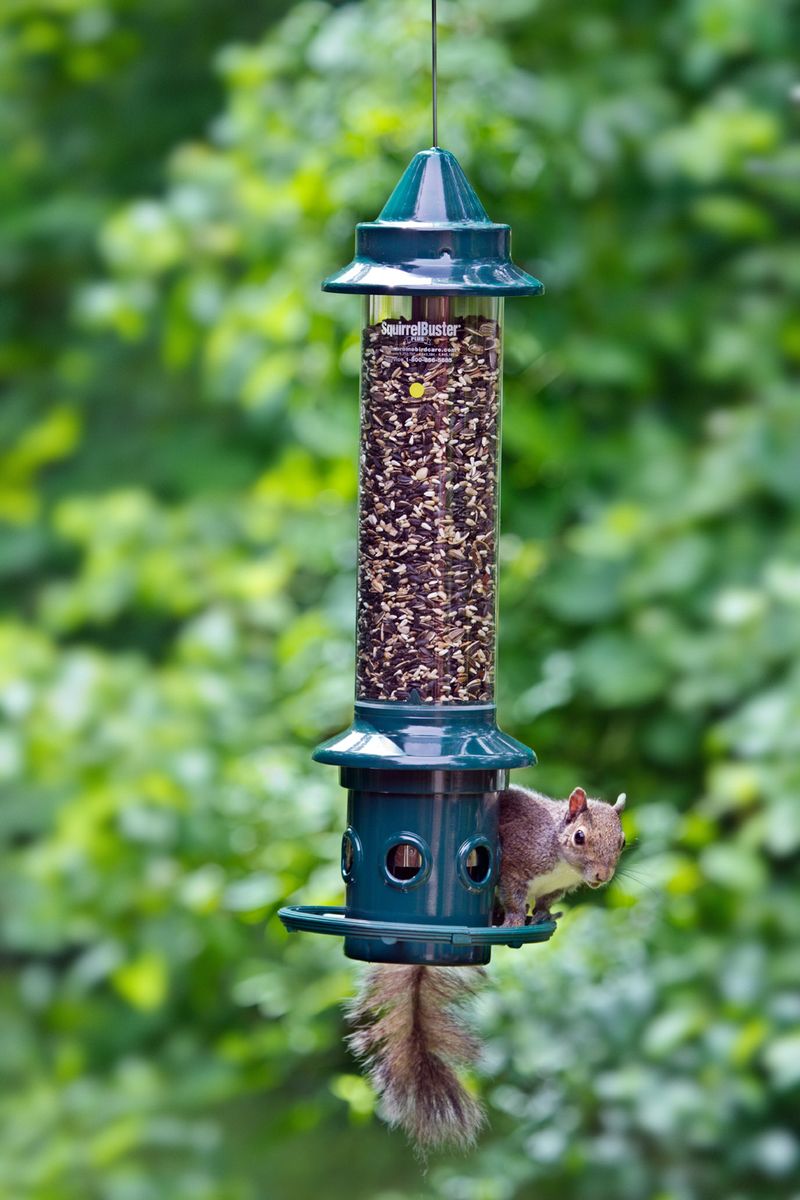
Gravity becomes your ally with weight-activated feeders featuring closing mechanisms at the bottom. When a squirrel’s weight pulls down on the feeding port, the opening closes completely.
Birds access seed without triggering the mechanism. These mechanical marvels frustrate squirrels who can see but not reach the seed, eventually teaching them to search elsewhere for easier meals.
18. Place Bird Feeders In Open Spaces
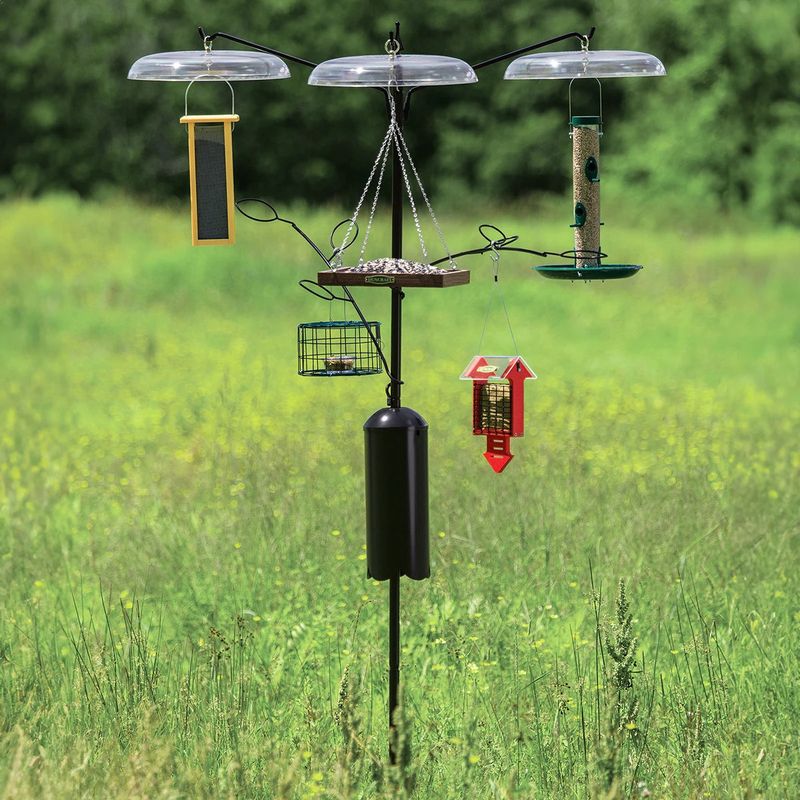
Squirrels prefer traveling along protected routes with plenty of cover. Positioning feeders in open, exposed areas creates a psychological barrier these cautious creatures hesitate to cross.
Without shrubs or structures to hide in, squirrels feel vulnerable to predators. Birds have no such concerns, happily flying directly to feeders in open spaces while squirrels remain reluctant to venture across exposed ground.


